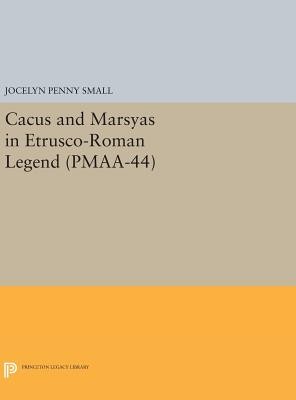
- We will send in 10–14 business days.
- Author: Jocelyn Penny Small
- Publisher: Princeton University Press
- ISBN-10: 0691642273
- ISBN-13: 9780691642277
- Format: 21.6 x 27.9 x 1.3 cm, kieti viršeliai
- Language: English
- SAVE -10% with code: EXTRA
Cacus and Marsyas in Etrusco-Roman Legend. (Pmaa-44), Volume 44 (e-book) (used book) | bookbook.eu
Reviews
Description
This book discusses how Greek and South Italian vase paintings of the musical contest between Apollo and Marsyas became the model for Etruscan representations of Cacus ambushed by the Vibennae brothers, two Etruscan heroes of the sixth century B.C. The study demonstrates that the Etruscans knowingly adapted Greek iconographic forms to represent their own legends.
Originally published in 1982. The Princeton Legacy Library uses the latest print-on-demand technology to again make available previously out-of-print books from the distinguished backlist of Princeton University Press. These editions preserve the original texts of these important books while presenting them in durable paperback and hardcover editions. The goal of the Princeton Legacy Library is to vastly increase access to the rich scholarly heritage found in the thousands of books published by Princeton University Press since its founding in 1905.EXTRA 10 % discount with code: EXTRA
The promotion ends in 22d.18:50:47
The discount code is valid when purchasing from 10 €. Discounts do not stack.
- Author: Jocelyn Penny Small
- Publisher: Princeton University Press
- ISBN-10: 0691642273
- ISBN-13: 9780691642277
- Format: 21.6 x 27.9 x 1.3 cm, kieti viršeliai
- Language: English English
This book discusses how Greek and South Italian vase paintings of the musical contest between Apollo and Marsyas became the model for Etruscan representations of Cacus ambushed by the Vibennae brothers, two Etruscan heroes of the sixth century B.C. The study demonstrates that the Etruscans knowingly adapted Greek iconographic forms to represent their own legends.
Originally published in 1982. The Princeton Legacy Library uses the latest print-on-demand technology to again make available previously out-of-print books from the distinguished backlist of Princeton University Press. These editions preserve the original texts of these important books while presenting them in durable paperback and hardcover editions. The goal of the Princeton Legacy Library is to vastly increase access to the rich scholarly heritage found in the thousands of books published by Princeton University Press since its founding in 1905.

Reviews